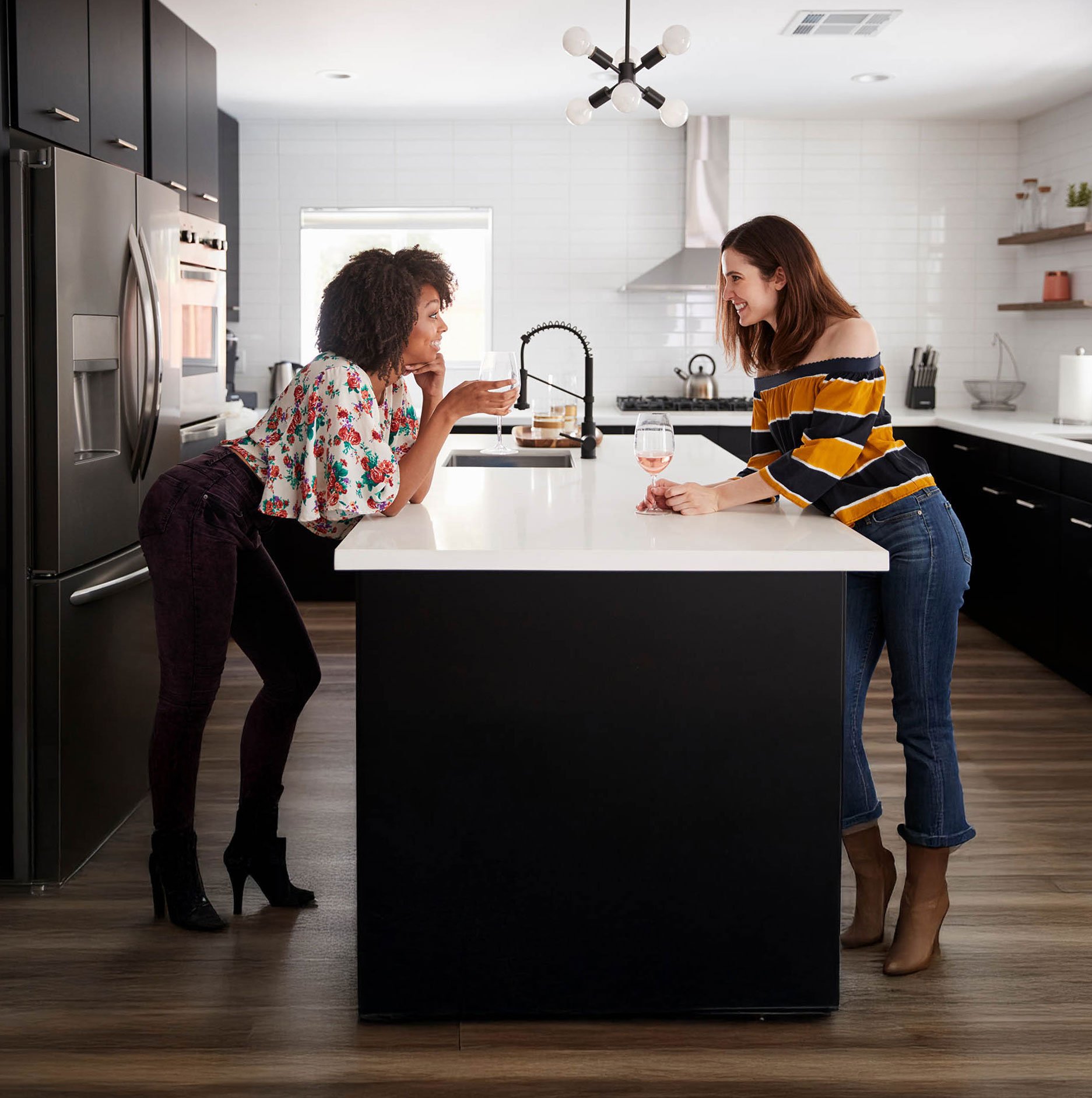Up to 40% OFF kitchen worktops
Unique Wooden Worktops for your home
Style
Why choose a wooden Worktop?
Wooden worktops bring natural warmth, beauty, and timeless character to any kitchen or workspace. As a versatile and sustainable option, wood delivers a stylish surface that can last for generations with the right care.
Natural beauty
Each wooden worktop is unique, with natural grains and tones that add warmth to any space.
Repairable and long-lasting
Scratches and marks can be sanded and re-oiled, ensuring years of use.
Sustainable choice
Responsibly sourced wood makes it an environmentally friendly option.
Featured Wooden Worktop Project
Spekva | Brasilia
Frequently asked questions
-
Yes, wooden worktops are durable and can last for decades with proper care. Hardwoods like oak, walnut, and iroko are especially tough, making them ideal for busy kitchens. Scratches or dents can also be repaired by sanding and re-oiling the surface.
-
Wooden worktops do require regular maintenance to retain their beauty and functionality. This involves re-oiling the surface periodically (2-3 times a year) and promptly wiping up spills to avoid water damage.
-
Yes, wood is porous and can stain if spills are left unattended. However, regular oiling creates a protective barrier that repels liquids. Stains can often be sanded out and the surface re-oiled for a fresh look.
-
Wooden worktops are easy to clean with mild soap and warm water. Avoid harsh chemical cleaners, bleach, or abrasive pads as they can damage the wood's finish. For stubborn stains, a mixture of baking soda and water can help lift dirt.
-
Yes, properly maintained wooden worktops are naturally antibacterial. Studies have shown that wood surfaces actively inhibit bacterial growth, making them a safe and hygienic choice for kitchens.
-
No, placing hot pans directly on wooden worktops can cause scorch marks or damage. Always use trivets or heat-resistant mats to protect the surface from heat.
-
Popular options include:
Oak: Known for its strength and classic grain patterns.
Walnut: Darker tones with a luxurious, refined look.
Beech: A light, affordable hardwood with a subtle grain.
Iroko: Naturally resistant to moisture, ideal for kitchens.
-
Yes, wood is one of the most sustainable worktop materials when sourced responsibly. Look for suppliers offering FSC-certified wood to ensure environmental responsibility.
-
Yes, wooden worktops are highly customisable. They can be cut to any shape, accommodate curved edges, and include features like integrated sinks, drainer grooves, or bespoke thicknesses.
-
One of the biggest advantages of wooden worktops is that they can be repaired. Light scratches can be buffed out with fine sandpaper, and deeper marks can be sanded down before re-oiling the surface.
-
Wooden worktops are more affordable than materials like quartz or granite but more expensive than laminate. Costs vary based on the wood type, thickness, and installation requirements.
-
To prevent water damage:
Regularly oil the worktops to create a protective layer.
Wipe up spills immediately, especially around sinks.
Avoid leaving wet items on the surface for prolonged periods.
-
Yes, wood develops a richer patina and deepens in colour over time. This natural maturing process adds to its character. If uneven patches appear, they can be sanded and re-oiled to restore the surface.
-
Wooden worktops require precise installation, including expansion gaps and proper sealing to accommodate natural movement. Professional installation ensures longevity and reduces the risk of bowing or warping.
-
Yes, wooden worktops can be paired with undermount sinks for a seamless look. Proper sealing and maintenance around the sink area are essential to protect against water damage.
-
Wood absorbs sound and vibrations, making it quieter than materials like stone or laminate. This contributes to a calm and inviting kitchen environment.

Need some help?
Why not check out our kitchen worktop learning centre for answers to questions like: how to measure, how to buy, how to choose a quartz worktop and more.





